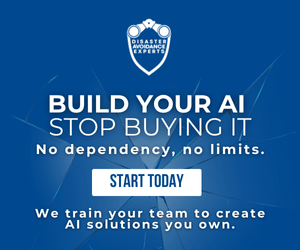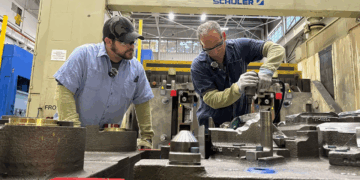- The percentage of people working from home has stabilized at around 28% after the pandemic, a significant increase from the pre-pandemic level of 5%.
- By 2026, the trend of working from home will once again rise, potentially becoming the dominant work model, challenging the existing workplace industrial complex (WIC) that thrives on traditional office-centric infrastructure.
- The shift to a digital-first, hybrid work model is leading to a profound transformation in office use, management practices, and corporate real estate, heralding a Copernican Revolution in the world of work that echoes historical resistance to paradigm shifts.
According to research by Nick Bloom and his team at Stanford, the percentage of people working from home (WFH) has stabilized at around 28%.
That contrasts with the pre-pandemic level of around 5%. Bloom and his team, however, are suggesting that the current stabilized pattern is merely a transition phase.
What comes after is most interesting.
By 2026, Bloom and his team suggest, the number of people working from home will begin to rise again, slowly becoming the dominant model.
Such a point of view, even if it is future-of-work prognostication, underscores a fundamental insight about which much of the workplace industrial complex (WIC) is in denial.
The implications of Bloom’s assertion are wide and profound.
The WIC
In a previous article in the Corporate Real Estate Journal, I introduced the concept of the workplace industrial complex, or WIC.
The WIC is that legacy combination of corporate real estate (CRE) brokers and property managers, architecture and design firms, furniture manufacturers, construction companies, and mechanical/engineering/plumbing contractors who have been the go-to beneficiaries of America’s decades-long office building spree.
For over a generation, and particularly since the advent of cheap capital post-2009, the WIC has been riding high.
Rather than coming to terms with the economic realities underscored by Bloom and his team — that the era of offices as the center of the world of work is coming to a close — the WIC is advocating “the flight to quality” and the piling on of more and more amenities.
As the old expression goes, “if you are a hammer everything looks like a nail.”
“if you are a hammer everything looks like a nail.”
Telling Anxious Managers What They Want to Hear
The WIC finds a willing audience in the form of traditional managers who continue to long for the before-times (i.e. pre-pandemic).
The failure of RTO mandates over the past year or so only foregrounds how out of step some managers are with employee experience as well as with the realities of employee well-being and productivity.
A whole host of other reasons — company culture, mentoring, “efficiency,” watercooler time, etc. — are also given for why “the office” is and will always remain paramount. But this is misleading.
From the Great Recession to AI
Economic crises are almost always followed by myriad forms of innovation.
The pandemic was no exception. The maturity of the digital workplace — Zoom, Slack, Asana, Teams, VPNs, Google Workplace, Mural, Miro, etc. — has made most of the work we do doable from home (or the beach). This is not to suggest that the office will go away.
I think the office will always be part of the mix, but its place, role, size, and purpose are on the cusp of an epochal transformation.
What we have been calling “hybrid work” over the past few years seems to imply a difference between “work” and “hybrid work.”
If Bloom and his team are correct, then hybrid work and work are no longer two separate things.
If Bloom and his team are correct, then hybrid work and work are no longer two separate things.
Work is work.
There are five knock-on effects that flow from this:
-
- Digital-first: Over the next 2–5 years, most companies will (some reluctantly) accept that that technology now necessitates that work is digital-first. Offices can support that, but gone are the days where digital tools are seen as supports for the office.
- Massive Shrinkage: From the 60 Minutes episode outlining New York City’s impending commercial real estate doom-loop, to record-high office vacancy rates nationwide, the writing is on the wall. The WIC will learn that “denial is not a river in Egypt.”
- New Gen Offices: Generations-old assumptions about what an office consists of is ripe for significant disruption. What types of spaces will people actually want in offices when they are only coming in occasionally? The A&D industry stands to benefit if they can learn to (fundamentally) rethink what they are designing for.
- Redefining Management: The persistence of managerial denial suggests that conventional (B-School) management education is simply dated. Rather, look at the “how to” guides that 100% remote companies like Zapier, Automattic, and GitLab have openly shared before and since the pandemic. Hint — think open source!
- Residentialization of CRE: To adapt, CRE will need to embrace the shift to residential development in former central business districts. In Oklahoma City, where plans are underway to build the tallest building in North America, city planners are rebranding their downtown as a CLD (Central Living District). The building will have little-to-no office space.
The Copernican Revolution
In his famous book — The Structure of Scientific Revolutions — historian of science Thomas Kuhn demonstrates that new scientific paradigms are typically rejected (even by fellow scientists) for at least a generation before professionals and the broader public accept them.
Think heliocentric theory, quantum mechanics, string theory, chaos theory, penicillin, gene theory, etc. All were dismissed for decades.
We are currently living in such a paradigm shift.
Those firms, in whatever industry in which they compete, that get out in front of the shift and innovate for the moment, will be the firms we remember.
Think Netflix and Blockbuster.
Think Netflix and Blockbuster.
It is (somewhat) understandable that the WIC remains in denial, but that is much more Blockbuster than Netflix.
If they are going to avoid going the way of retail stockbrokers and travel agents, they might want to heed the five knock-on effects that play out when hybrid work simply becomes work.


 Dr. Gleb Tsipursky – The Office Whisperer
Dr. Gleb Tsipursky – The Office Whisperer Nirit Cohen – WorkFutures
Nirit Cohen – WorkFutures Angela Howard – Culture Expert
Angela Howard – Culture Expert Drew Jones – Design & Innovation
Drew Jones – Design & Innovation Jonathan Price – CRE & Flex Expert
Jonathan Price – CRE & Flex Expert














